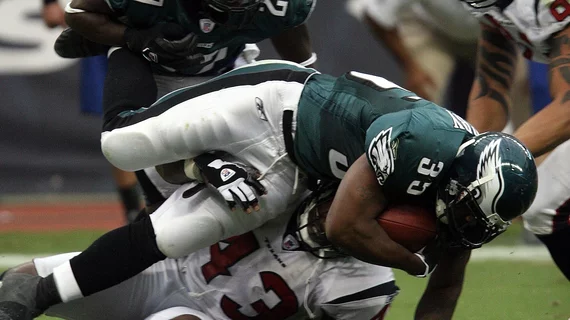Little-known hereditary ataxia may gain understanding in the wake of high-profile NFL head traumas
A radiologist with a rare inherited neurological condition is drawing strength from, of all things, the NFL’s concussion protocol.
Linda Snider, MD, of Methodist Hospital in Omaha shares her story with a local TV station in that Nebraska city.
On Sept. 25, when Miami Dolphins quarterback Tua Tagovailoa wobbled and fell after hitting his head on the field, Snider recalls making an instant diagnosis: “He has ataxia!”
But where Tagovailoa’s ataxia clearly followed his head injury and should respond to treatment, as is typical of trauma-caused ataxia, Snider’s is genetic and worsens with age.
She knows this because she lost her father and a cousin to the disease, KMTV-3 reports.
Regardless of etiology, ataxia is characterized by lack of control over body movements and an unsteady walk with the feet spread wide, according to RadiologyInfo.org.
Snider describes her symptoms as feeling like someone who’s “had too much to drink. Things feel a bit off balance. [For me] it’s like that all the time.”
In Tagovailoa’s case, the star QB returned to action just four days after the initial injury—and suffered another blow to the back of the head.
His return set off a monsoon of reactions in the national sports press and on social media platforms.
In response, KMTV-3 reminds, the NFL says its concussion protocol was followed properly for Tagovailoa after the Sept. 25 game (against the Buffalo Bills).
But the compliance “did not prevent Tagovailoa's scary injury just four days later against the Bengals. He was carted off the field but says he doesn’t remember it.”
The TV news reporter, Aaron Hegarty, quotes Steven Barlow, PhD, who chairs the department of special education and communication disorders at the University of Nebraska, Lincoln.
Barlow says the cerebellum, or “little brain,” has been implicated in movement and speech disorders for years.
However, that brain region is “probably the least understood in terms of ... how it responds to a concussive input to the head,” Barlow adds.
The article notes Snider founded a support group for ataxia patients and their family members.
Acknowledging the troubling nature of Tagovailoa’s injuries, Snider expresses hope the NFL’s attention to ataxia will help inform the public about the condition’s unique profile vs. multiple sclerosis and other neurological diseases with similar symptoms.
“I’m hoping now people are more educated about ataxia,” she says, “and will stop assuming that I’m drunk.”

